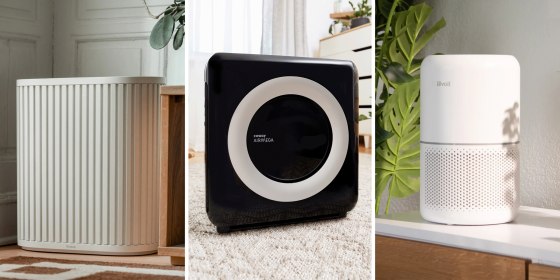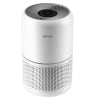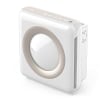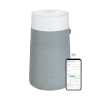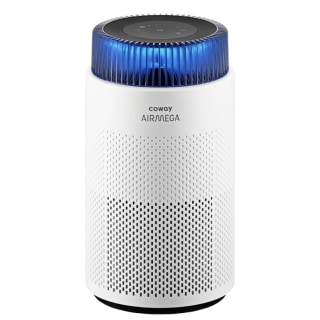According to the Environmental Protection Agency, the air inside your home may be more polluted than the air outdoors, even if you live in a large city center. One way to improve your air quality indoors is by using an air purifier — they can filter air contaminants like dust, pollen and smoke.
The NBC Select team has used air purifiers to filter pollen, odors, pet hair and even wildfire smoke from our homes for years. We spoke with filtration experts to better understand the technical aspects of air quality and filtration in order to select the best air purifiers for your space.
How we picked the best air purifiers
We spoke with filtration experts to better understand the importance of air quality and purification methods. Following their guidance and our experience using air purifiers, we selected models based on the following criteria:
- Filtration: All of our recommendations have high-efficiency particulate air filtration (HEPA) and have a clean air delivery rate (CADR) equivalent of at least two-thirds the recommended room square feet. (You can learn more about HEPA and CADR in the FAQ section.)
- Size: You could have the best air purifier in the world, but if it’s the size of a car, it’s no good for your studio apartment. We selected air purifiers across a range of sizes.
- Recommended room size: The Center for Disease Control (CDC) and Association of Home Appliance Manufacturers (AHAM) recommended an air purifier that is capable of filtering that room’s air five times and 4.8 times per hour respectively. This is called air changes per hour, or ACH. We selected different strength air purifiers based on this recommendation. (You can learn more about ACH in the FAQ section.)
- Sound: According to the CDC, prolonged exposure to sound levels above 70 dbA can annoy you and damage your hearing over time. That’s why we picked air purifiers with at least three fan speed levels — air purifiers can be loud at their highest speed, so having a low speed option is crucial for keeping spaces like bedrooms quiet.
- Independent testing: We noted if a product was independently tested by AHAM, which certifies the performance of air purifiers through its AHAM Verifide program.
Want more from NBC Select? Sign up for our newsletter, The Selection, and shop smarter.
The best air purifiers in 2025
Most of our recommendations are staff favorites from large filtration brands like Coway, Levoit and Blueair. Below each recommendation we share specifications we think you should know like recommended room size (based on the CDC’s and AHAM’s ACH guidelines), filter lifespan and more.
Best for small rooms: Levoit Core 300
- Strong filtration
- Competitive price
- Small size
- No smart connectivity
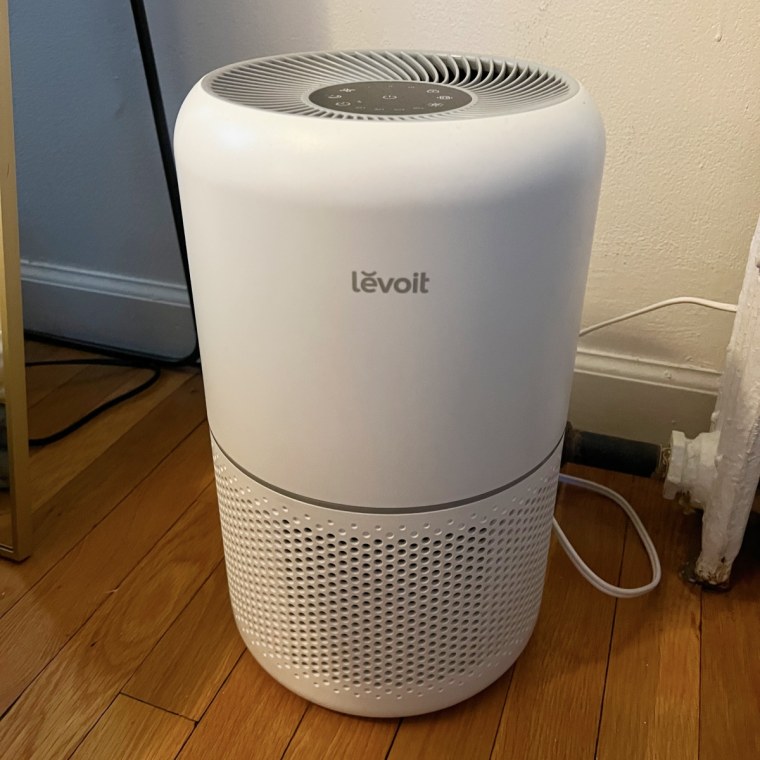
This is a great affordable air purifier for small spaces like bedrooms. It’s small, quiet, easy to move around and has strong filtration for its size. NBC Select updates editor Mili Godio keeps it in her bedroom to clear dust and pet hair from the air. It has a sleep mode that runs at a very quiet speed and if you are sensitive to light, the bright LEDs on the top panel can be turned off.
There is also a version with Wi-Fi and app connectivity, the Core 300S-P, but it costs significantly more at $150.
Recommended Room Size (for 4.8 ACH): 222 sq. ft. | Filter lifespan: ~6 to 8 months | CADR (CFM): smoke: 143, dust: 153, pollen: 167 | AHAM verified: Yes | Speeds: 3 | Smart connectivity: no | Decibels: 24 — 54.5 dB(A) | Weight: 7.9 lbs
Runner up for small rooms: Coway Airmega 100
- Beginner-friendly
- Small size
- Filters last up to 12 months
- Lower CADR
- No smart connectivity
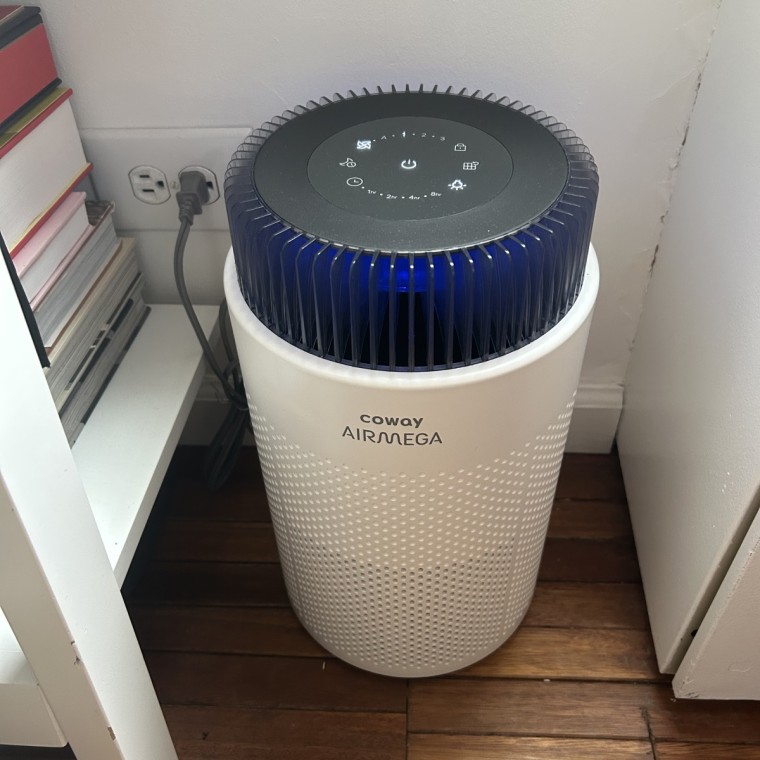
NBC Select commerce editor Lindsay Schneider received the Airmega 100 air purifier from Coway, and it’s one of her favorite models. It’s easy to set up, intuitive to use and every button has a clear and useful purpose. “It’s truly beginner friendly,” says Schneider.
It has a built-in light that acts as either an air quality indicator, changing colors depending on the detected air quality or a warm amber-colored night light. You can turn the light completely off, too.
Another highlight is that the HEPA filter lasts a full 12 months before you need to replace it, keeping costs down.
Recommended Room Size (for 4.8 ACH): 167 sq. ft. | Filter lifespan: ~12 months | CADR (CFM): smoke: 108, dust: 124, pollen: 112 | AHAM verified: No | Speeds: 4 | Smart connectivity: no | Decibels: 20 — 48 dB(A) | Weight: 6.6 lbs
Best for medium rooms: Coway Airmega AP-1512HH Mighty
- Powerful filtration
- Easy to use controls
- Filters last up to 12 months
- No smart connectivity
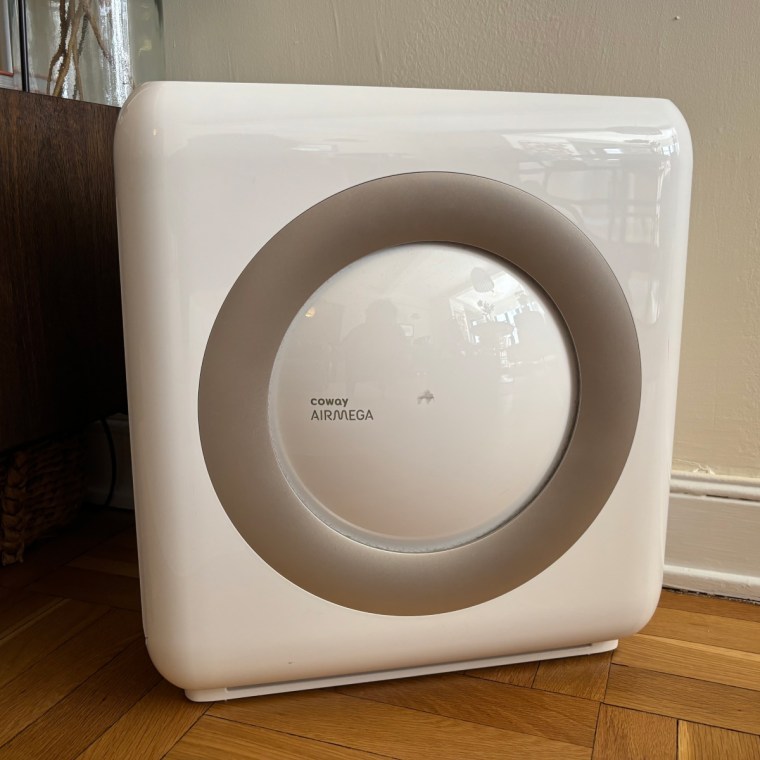
NBC Select reporter Zoe Malin has used air purifiers for years to combat her dust and allergen sensitivity. It also helps deal with the pet hair of her two cats and small dog floating around.
She uses this Coway air purifier in her living room. Most of the time, she forgets it’s even there — it’s not very noisy and it has an intelligent auto mode, where it automatically changes speeds depending on the air quality detected. It usually stays at the lowest setting, but if she is cooking a large meal, it will change to a higher setting, acting as a good reminder to turn on a vent or maybe open a window, says Malin. Like our other pick from Coway, the HEPA filter lasts a full 12 months before needing replacement; that’s longer lasting than many other competitors.
Recommended Room Size (for 4.8 ACH): 361 sq. ft. | Filter lifespan: ~12 months | CADR (CFM): smoke: 234, dust: 248, pollen: 232 | AHAM verified: No | Speeds: 3 | Smart connectivity: no | Decibels: 24 — 53 dB(A) | Weight: 12.3 lbs
Runner up for medium rooms: Windmill Air Purifier
- Attractive design
- Powerful filtration
- Tactile controls on the unit
- Pricey
- Filters only last 6 months
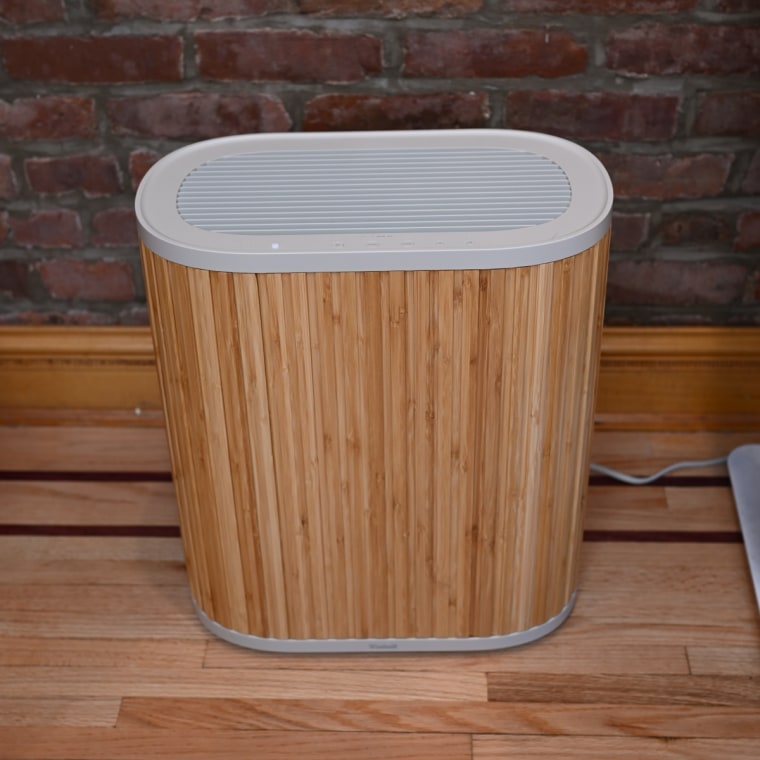
Multiple NBC Select staffers use and love this robust and stylish air purifier from Windmill. Malin, who has dust and allergen sensitivity, has had fewer symptoms ever since she put this unit in her bedroom. Similarly, former NBC Select associate reporter Bianca Alvarez lives with a partner who has asthma and he’s noticed his breathing ease after living with this purifier.
Both Malin and Alvarez use the Windmill Air app to control the unit remotely from their phones — the app lets you easily check your air quality, filter status and set up automated schedules and routines.
The Windmill Air Purifier has another great feature — the child lock function — Malin uses it to prevent her cats from accidentally changing the settings when they inevitably jump on top of the unit. It comes in multiple colors but is pricy and rather heavy at 21 pounds.Plus, the filters only last up to six months, shorter than most competitors.
Recommended room size (for 4.8 ACH): 442 sq. ft. | Filter lifespan: ~6 months | CADR (CFM): smoke: 286, dust: 284, pollen: 343 | AHAM verified: yes | Speeds: 5 | Smart connectivity: yes, Windmill Air app | Decibels: 16 — 54 dB | Weight: 21 lbs
Best for large rooms: Blueair Pure 211i Max
- Very powerful filtration
- Long-lasting filters
- Washable fabric pre-filter
- Large
Blueair makes some of our favorite air purifiers — I’ve used a different Blue Pure model in my bedrooms for years, including during 2023’s Canadian wildfire season. On the day of some of the worst air pollution in NYC, the NBC Select office smelled like a BBQ while my apartment, which had a Blueair Pure 311i+ Max air purifier running, smelled completely normal.
The Pure 211i Max is one of the brands largest air purifiers, and has a very powerful filtration fit for large spaces up to 635 square feet. It pulls unfiltered air from all directions into its base, making it easy to place anywhere in your room. It’s also relatively quiet and lightweight despite its larger size and strong filtration.
You can control it manually or with the Blueair app, where you can see detailed stats like indoor air quality and filter status. I use the app to set a schedule for my purifier — it automatically changes to night mode, the lowest and quietest speed, every evening around 9 PM.
Recommended room size (for 4.8 ACH): 635 sq. ft. | Filter lifespan: ~12 months | CADR (CFM): smoke: 410, dust: 410, pollen: 410 | AHAM verified: yes | Speeds: 4 | Smart connectivity: yes, Blueair app | Decibels: 23 — 53 dB | Weight: 16.2 lbs
How to shop for an air purifier
Air purifiers are designed to remove indoor air pollution caused by fuel-burning appliances, cleaning products, heating and cooling systems, car pollution, wildfire smoke and everything in between. These indoor contaminants can enter your lungs and cause irritation or trigger allergic reactions, says Kenneth Mendez, president of the nonprofit Asthma and Allergy Foundation of America.
Filtration is key when choosing an air purifier. Our experts highlight two factors in getting effective filtration: HEPA filters and an appropriate CADR. You can read more about both in the following FAQ section.
Meet our experts
At NBC Select, we work with experts who have specialized knowledge and authority based on relevant training and/or experience. We also take steps to ensure all expert advice and recommendations are made independently and without undisclosed financial conflicts of interest.
- Kenneth Mendez is the president of the nonprofit Asthma and Allergy Foundation of America.
- Michael Corbat is the vice president of engineering for Rensa Filtration and former president of the National Air Filtration Association.
Why trust NBC Select?
I am a reporter at NBC Select who covers technology and fitness including guides to smartwatches, cameras and e-readers. For this piece, I spoke with filtration experts to better understand air purifiers and how they function. I leveraged NBC Select staff and my own experience using air purifiers to recommend the best ones for different room sizes.
Catch up on NBC Select’s in-depth coverage of tech and tools, wellness and more, and follow us on Facebook, Instagram, Twitter and TikTok to stay up to date.
